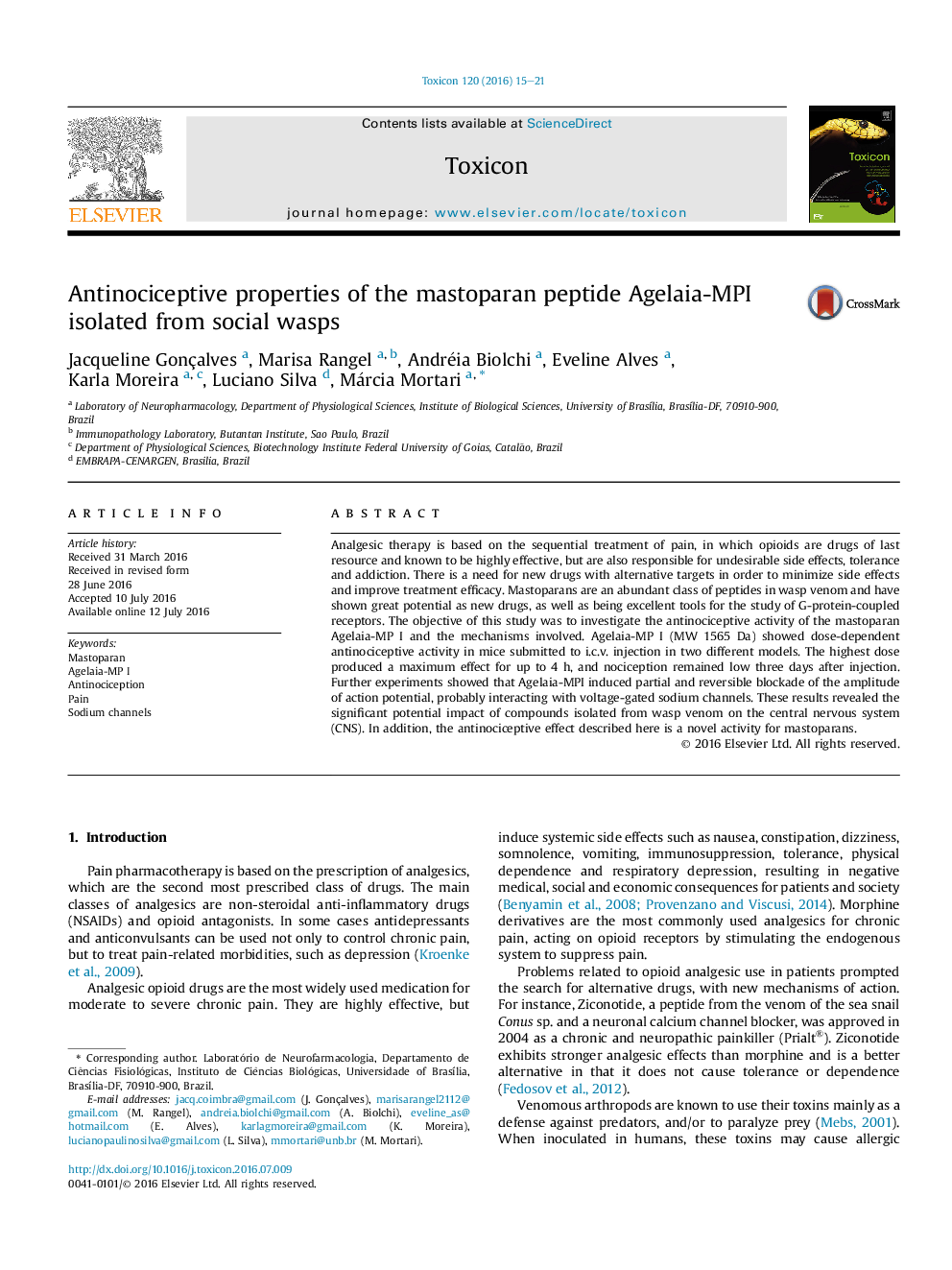| Article ID | Journal | Published Year | Pages | File Type |
|---|---|---|---|---|
| 2063959 | Toxicon | 2016 | 7 Pages |
•Mastoparan Agelaia-MP I was isolated from the venom of Paracharterus fraternus wasp.•Agelaia-MP I showed dose-dependent antinociceptive activity.•The peptide induced reversible blockade of action potential.
Analgesic therapy is based on the sequential treatment of pain, in which opioids are drugs of last resource and known to be highly effective, but are also responsible for undesirable side effects, tolerance and addiction. There is a need for new drugs with alternative targets in order to minimize side effects and improve treatment efficacy. Mastoparans are an abundant class of peptides in wasp venom and have shown great potential as new drugs, as well as being excellent tools for the study of G-protein-coupled receptors. The objective of this study was to investigate the antinociceptive activity of the mastoparan Agelaia-MP I and the mechanisms involved. Agelaia-MP I (MW 1565 Da) showed dose-dependent antinociceptive activity in mice submitted to i.c.v. injection in two different models. The highest dose produced a maximum effect for up to 4 h, and nociception remained low three days after injection. Further experiments showed that Agelaia-MPI induced partial and reversible blockade of the amplitude of action potential, probably interacting with voltage-gated sodium channels. These results revealed the significant potential impact of compounds isolated from wasp venom on the central nervous system (CNS). In addition, the antinociceptive effect described here is a novel activity for mastoparans.
